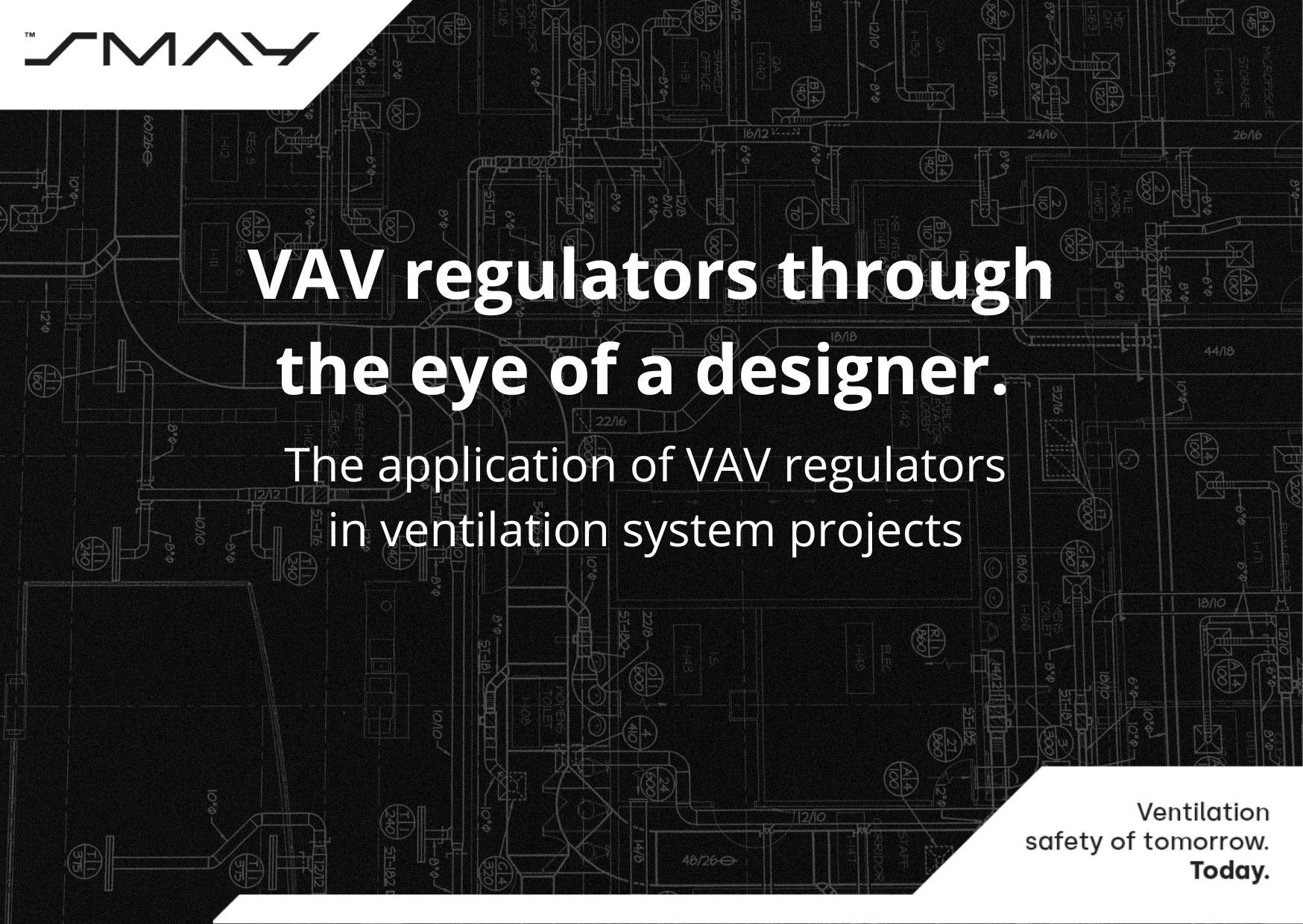The application of VAV regulators in ventilation system projects

VAV regulators are responsible for the automatic airflow regulation within ventilation systems. Their function is to regulate variable airflow depending on the demand. Do you design ventilation systems? Our expert answers the questions connected with using VAV regulators in various projects.
Is it possible to combine VAV regulators with dampers? What is the difference between a VAV regulator and a differential pressure regulator? Szymon Płonczyński, SMAY’s expert in the field for CAV and VAV systems, talks about the specifics of VAV regulators and their use in various projects.
Author

Szymon Płonczyński
Expert in the field for CAV and VAV systems – SMAY
Is it possible to use VAV variable air volume regulators together with air dampers?
There is no way that VAV regulators can operate together with dampers. The operating principle of a VAV regulator involves changing the airflow rate (in a given part of the system) to maintain a specific parameter in the room (for example, CO2 concentration, air pressure or room temperature). Each change of the airflow rate at the VAV regulator would require adjusting the configuration of the dampers. Therefore, as a rule of thumb, if at least one VAV regulator is used in a system, other branches should also be equipped with devices for automatic regulation as well, such as a VAV regulator, a CAV regulator or a differential pressure regulator.

The incorrect configuration of VAV regulators and regulation dampers is shown in figure 1.

In figure 2, the regulation dampers have been replaced by CAV constant flow regulators. This is the correct solution.
What is the difference between a flow VAV regulator and a differential pressure regulator?
Both a VAV flow regulator and a differential pressure regulator measure the same parameter, namely the pressure difference. The difference is that in the case of the VAV regulator, the pressure difference is measured at a measuring element installed directly on the unit. Thus, a change in room or system pressure is not so important for VAV regulation. The regulator keeps the airflow at a preset level and the unit responds to changes in this level.
A pressure regulator directly measures the pressure in a room or in a duct and relates it to a base value, which can be the pressure in a neighbouring room or the atmospheric pressure. In this case, every change in the pressure value affects the operation of the regulator significantly.
VAV regulators and minimum flow velocity
The second substantial difference is that the VAV regulator has a so-called “dead zone” between zero and the minimum flow velocity. This means that the VAV regulator below the minimum flow velocity adjusts with too much inaccuracy. In the case of a differential pressure regulator, this problem does not exist.
It can operate at any possible minimum flow velocity and can even close the damper completely when the preset parameter has not been reached. Due to these differences, using differential pressure regulators within a system is governed by different principles and the same principles cannot be applied as in the case of VAV or CAV regulators.
Using VAV variable air volume regulators in the constant air volume mode
In the case of a system, where almost all branches are fitted with VAV regulators but at the end of the system there is one branch with the constant air volume carried out by the CAV regulator, this will force all the VAV regulators mounted upstream to dampen “additional” pressure of about 50 Pa to provide the required airflow in the last branch.
Therefore, in such a system it is advisable to use variable air volume regulators working in the constant air volume mode. This will make it possible to decrease the required external static pressure. Such an action will reduce the fan speed and reduce electricity consumption.

The situation described above is shown in figure 3.
Another reason for using VAV regulators in constant air volume mode is the requirement to close the regulator. CAV regulators do not have this capability. They only work within the range specified in the datasheet. The VAV regulator, on the other hand, can be forced to close entirely.



